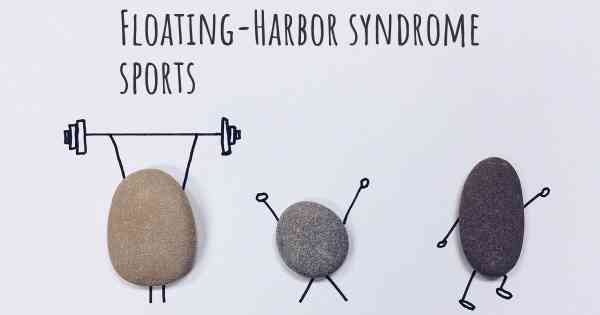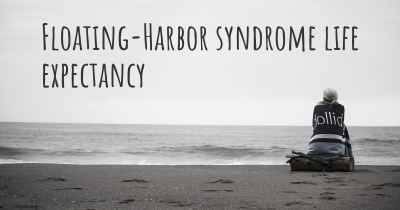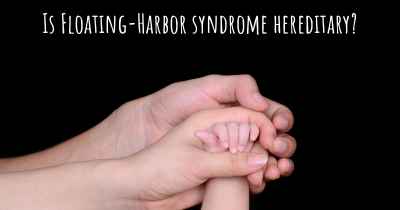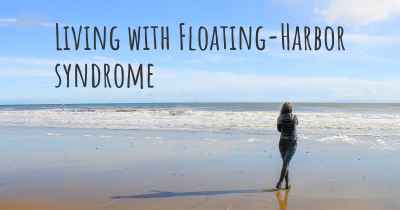Is it advisable to do exercise when affected by Floating-Harbor syndrome? Which activities would you suggest and how intense should they be?
See if it is advisable for people with Floating-Harbor syndrome to practice sports and which ones are the most recommended if you have Floating-Harbor syndrome

Floating-Harbor syndrome (FHS) is a rare genetic disorder that affects various aspects of an individual's development, including growth, speech, and skeletal structure. While exercise can be beneficial for overall health and well-being, it is important to approach it with caution when dealing with FHS. As with any medical condition, it is crucial to consult with a healthcare professional before starting any exercise regimen.
Exercise Recommendations for Floating-Harbor Syndrome:
1. Low-Impact Activities: Engaging in low-impact exercises can help improve cardiovascular health, muscle strength, and flexibility without putting excessive strain on the joints. Some suitable activities include:
- Walking: Walking is a gentle exercise that can be easily modified to suit individual fitness levels. It helps improve cardiovascular endurance and overall fitness.
- Swimming: Swimming is a low-impact exercise that provides a full-body workout. It is gentle on the joints and can help improve muscle tone and cardiovascular health.
- Cycling: Riding a stationary bike or cycling outdoors can be a great way to improve cardiovascular fitness and leg strength without putting excessive stress on the joints.
- Yoga: Practicing yoga can help improve flexibility, balance, and strength. It also promotes relaxation and stress reduction.
2. Strength Training: Incorporating light strength training exercises can help improve muscle tone and overall strength. However, it is important to use light weights or resistance bands and focus on proper form to avoid injury. Some suitable exercises include:
- Bodyweight exercises: Exercises such as squats, lunges, push-ups, and planks can be performed using one's body weight as resistance.
- Lightweight exercises: Using light dumbbells or resistance bands, exercises like bicep curls, shoulder presses, and tricep extensions can be performed.
- Balance exercises: Standing on one leg, heel-to-toe walk, or using a stability ball can help improve balance and stability.
3. Flexibility and Stretching: Stretching exercises can help improve flexibility, joint range of motion, and prevent muscle tightness. It is important to perform gentle stretches and avoid overstretching. Some suitable stretching exercises include:
- Neck stretches: Slowly tilting the head from side to side, forward and backward can help relieve tension in the neck muscles.
- Shoulder and chest stretches: Stretching the arms across the chest or behind the back can help improve flexibility in the shoulders and chest.
- Leg stretches: Gentle hamstring, quadriceps, and calf stretches can help improve flexibility in the lower body.
- Back stretches: Cat-cow stretch, child's pose, and gentle twists can help improve flexibility and relieve tension in the back.
4. Balance and Coordination: Engaging in activities that improve balance and coordination can be beneficial for individuals with FHS. Some suitable activities include:
- Tai Chi: Tai Chi is a low-impact exercise that focuses on slow, controlled movements, promoting balance, coordination, and relaxation.
- Pilates: Pilates exercises can help improve core strength, stability, and overall body control.
- Balance exercises: Standing on one leg, using a balance board, or practicing heel-to-toe walk can help improve balance and coordination.
Intensity and Safety Considerations:
When it comes to exercise intensity, it is important to start slowly and gradually increase the duration and intensity of the workouts. Each individual with FHS may have different abilities and limitations, so it is crucial to listen to the body and avoid pushing beyond comfortable limits.
Additionally, it is important to prioritize safety during exercise. Some key considerations include:
- Proper warm-up: Always start with a gentle warm-up to prepare the body for exercise. This can include light cardio exercises and dynamic stretches.
- Proper form: Focus on maintaining proper form during exercises to prevent injury and maximize benefits.
- Rest and recovery: Allow adequate rest between exercise sessions to prevent overexertion and promote recovery.
- Hydration: Stay hydrated before, during, and after exercise to support overall health and well-being.
- Monitoring symptoms: Pay attention to any unusual symptoms or discomfort during exercise and consult a healthcare professional if needed.
Conclusion:
While exercise can be beneficial for individuals with Floating-Harbor syndrome, it is important to approach it with caution and consult with a healthcare professional. Low-impact activities, light strength training, flexibility exercises, and activities that improve balance and coordination can be suitable options. Remember to start slowly, prioritize safety, and listen to your body's limitations. Regular exercise, when done appropriately, can contribute to overall health and well-being for individuals with FHS.








